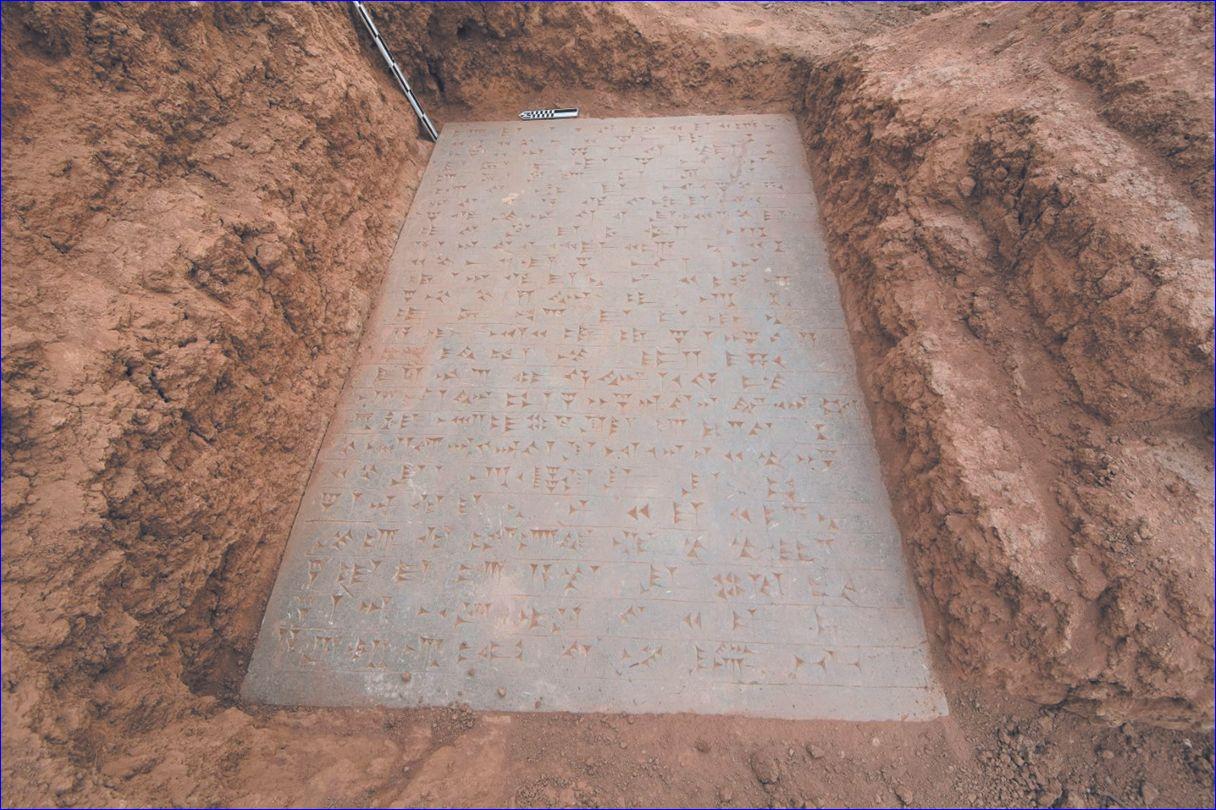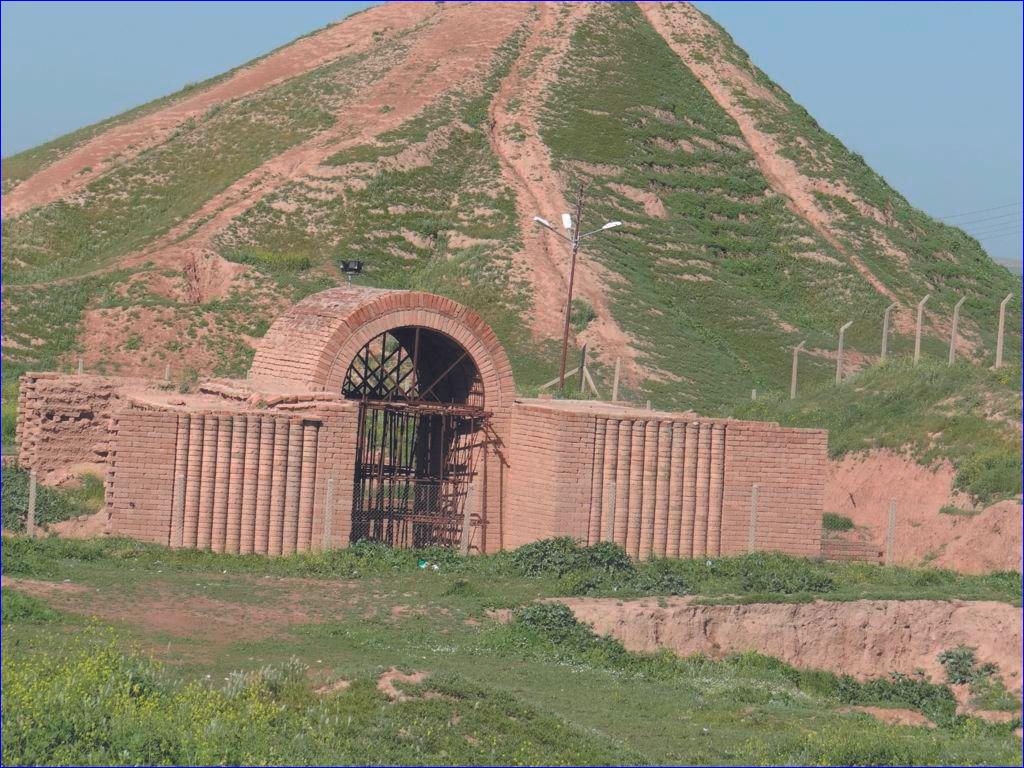


 Courtesy Michael Danti)
Courtesy Michael Danti)
"This find is significant," says Michael Danti, the archaeologist leading a team from the University of Pennsylvania that began excavations in mid-October. "Not only because it survived the Babylonian siege and destruction by Isis intact but also because of its size. I've seen tablets that are smaller than one of the sign forms [cuneiform letters] on this slab."
Danti notes that several similar slabs with genealogical inscriptions listing the royal ancestors of the king have been found in the area of the palace since it was first excavated by the British archaeologist Austen Henry Layard in the 1840s. He says that the slab they discovered was one of two excavated by Layard. (The second was taken back to England and is still on display at the British Museum in London.)
In a phone interview from his base camp in Nimrud, located in a remote location 30 kilometres south of Mosul, Danti explains that the slab his team found was likely uncovered by Layard and then re-buried in a new ruin mound after he left and the high-walled mud-brick palace collapsed. It was like "forensic archaeology," Danti says. "We had to re-excavate the old excavations."
Related: Timeline of ISIS in Iraq
Related: Attacks on Assyrians in Syria By ISIS and Other Muslim Groups
The team discovered a pit in the floor in one of the doorways where Layard removed the slab that is in the British Museum. "We saw the evidence of what had been taken away preserved under new ruins. At times, it felt like we were excavating the history of 19th-century archaeology," Danti says.
He recalls reading Layard's books--popular adventure and archaeology travelogues of the Victorian era--as a young student and while he excavated, thinking: "Wow, this is on page 14 of his book."
Indeed, Nimrud, of which 90% of its excavated part was destroyed by ISIS, remains both a tragedy and a treasure trove for Iraqi archaeology. Isis engaged in multiple attacks on the site including bulldozing the iconic ziggurat to less than half its size and using its debris to bury surrounding buildings, and employing barrel bombs to blow up statues. Many of the mainly Assyrian buildings on the ancient site were also destroyed in revenge attacks at the end of the Assyrian empire by the Babylonians and the Medes. Yet there is still much left to excavate, says Danti.
Piecing the puzzle together
Danti's team must sift through layers of destruction and construction in an effort to piece together thousands of years of history. Like other ancient sites in Iraq, much of the original mud-brick ruins that survived the Babylonian siege were reconstructed in the mid-20th century by the Iraqi antiquities department in an effort to preserve the fragile material. Typically, original ruins were built up with reconstructed upper floors and, like other ancient sites ravaged by Isis, extremists destroyed both ancient and modern elements.

 Courtesy Michael Danti)
Courtesy Michael Danti)
One of the miracles of the recent slab discovery, says Danti, is that "Isis might well have been aware of its existence and yet it was so well preserved."
Currently, Danti's team is working on the reconstruction of the Temple of Ishtar next to the ziggurat, whose monumental entrance was bulldozed by Isis, employing more sustainable techniques and materials than those used in the past.
Danti is also hoping to uncover more information at the palace about Queen Sammuramat (later known as Semiramis), the mother of King Adad-Nirari III. Among Assyrian queens she was exceptionally powerful, known to have gone on military campaigns with her son, and atypically appears in cuneiform documents.
He notes that only a small part of the palace has been excavated and that his team continues to find fragments of sculptures and other objects. Most recently they discovered part of a stone box that held the post of a door, invoking divine "protective magic" from an array of Mesopotamian gods.
Danti and his team are slowly piecing together bits of the box broken up in antiquity--possibly during the Babylonian siege--or in more recent attacks. "We keep finding parts of it scattered in the palace," he says, "like a jigsaw puzzle."

or register to post a comment.